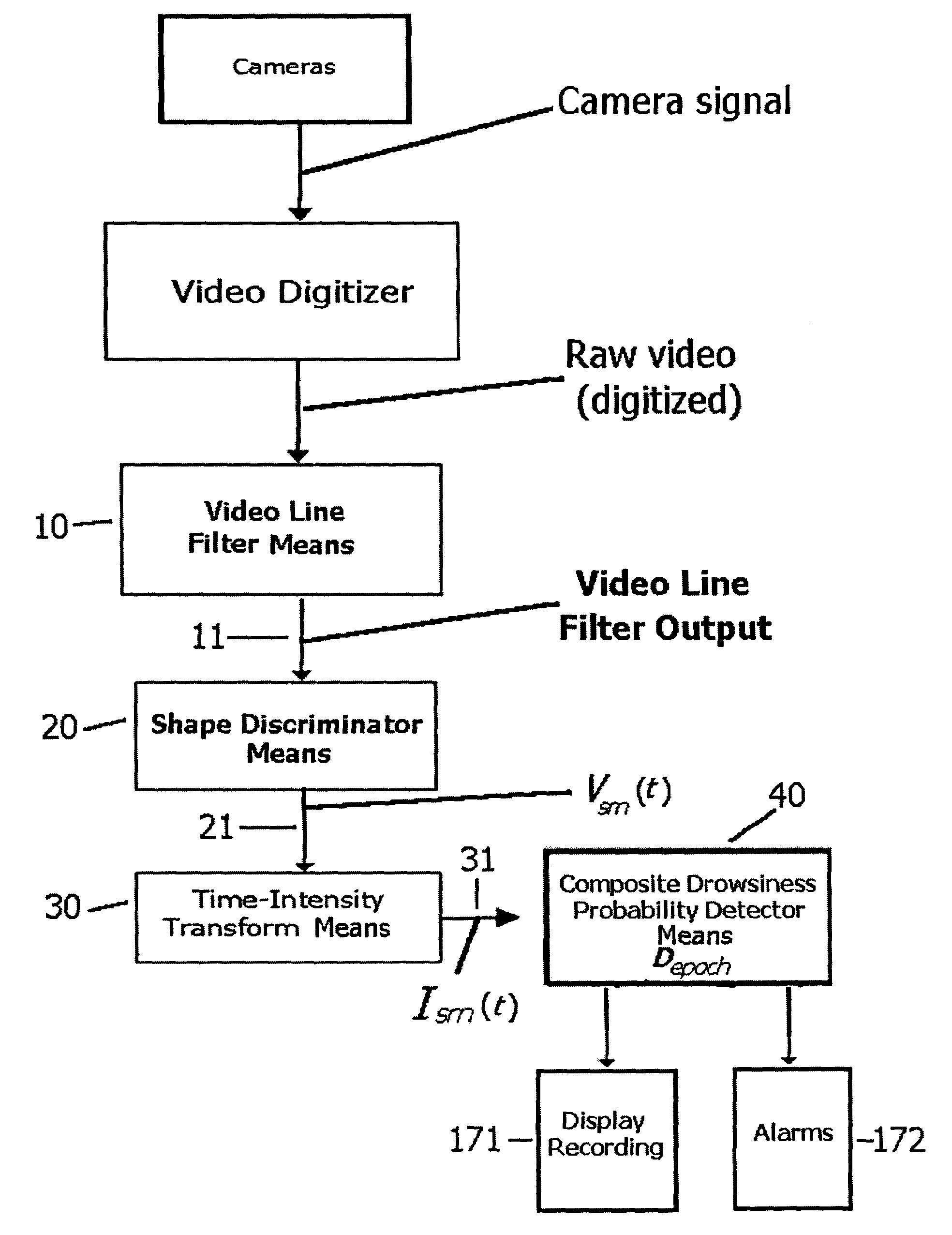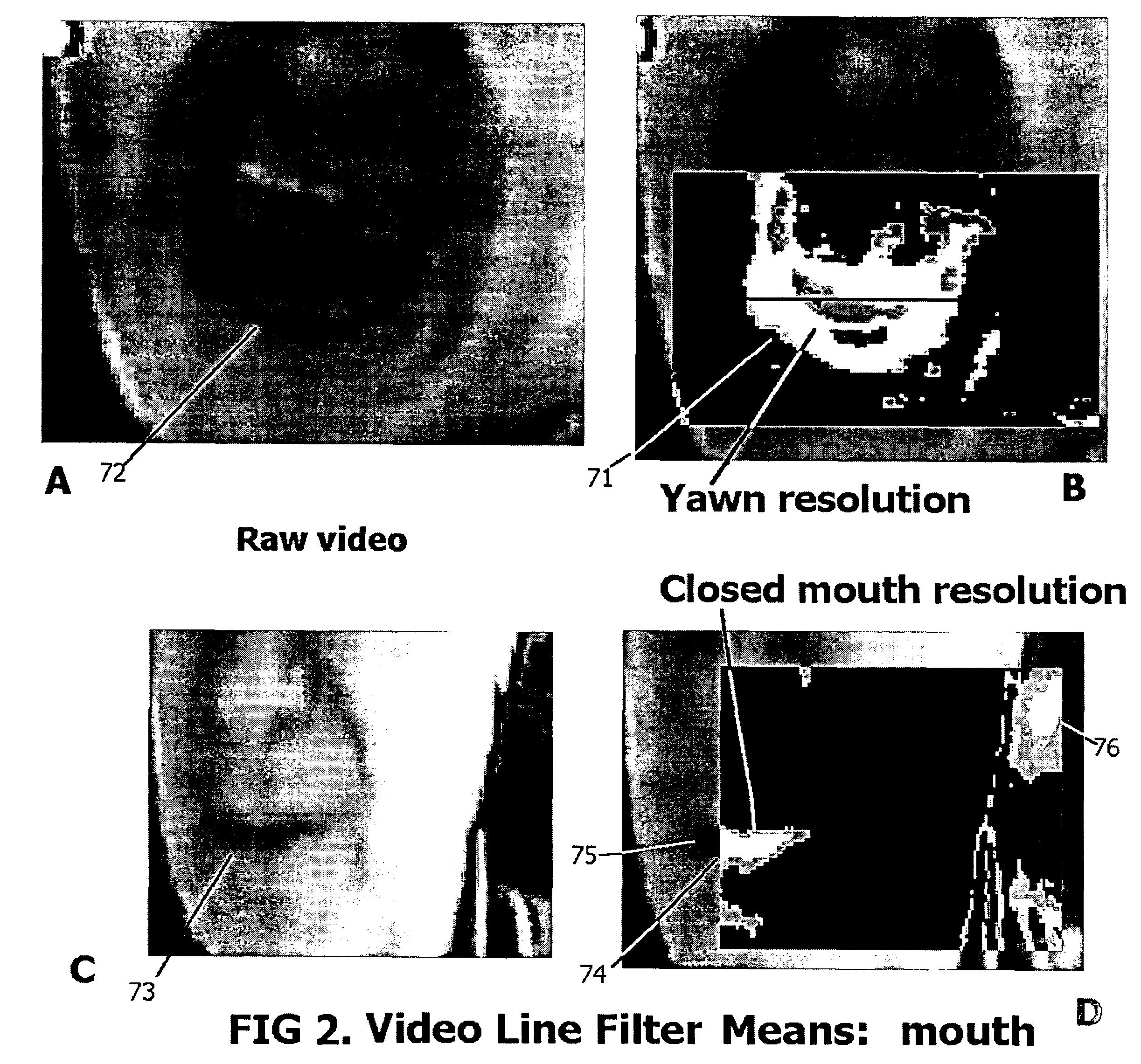Method and apparatus for detection of drowsiness and quantitative control of biological processes
a biological process and quantitative control technology, applied in the field of methods and apparatuses for detection of drowsiness, can solve the problems of many vehicle operators, such as long-distance truck drivers, being far more likely to develop drowsiness, and many vehicle operators are sleep-deprived, and achieve the performance of drowsy drivers much worse than that of alert drivers
- Summary
- Abstract
- Description
- Claims
- Application Information
AI Technical Summary
Benefits of technology
Problems solved by technology
Method used
Image
Examples
Embodiment Construction
[0032]The preferred embodiment of the present invention will now be described with references to FIGS. 1-12.
[0033]Drowsiness probability calculation in accordance with the preferred embodiment of the present invention is preferably based on the operation of three sequential means of processing (see FIG. 8): the video line filter means (VLFM) 10 operating on raw digitized video data, the shape discrimination means (SDM) 20 operating on the output of VLFM, and the time-intensity transform means (TITM) 30 operating on the output of SDM. The TITM outputs from the SRs 41 within the ROIs 42 (see FIG. 1) for the facial fiducials are then used to calculate a composite drowsiness probability 51 (See FIG. 12). The operation of these means is described as follows.
[0034]Operation of VLFM is demonstrated in FIGS. 1-3. A ROI 42 is created by selecting a region of the video frame buffer corresponding to coordinates under program control. In the Figures, these are the shaded regions. Gradations of ...
PUM
 Login to View More
Login to View More Abstract
Description
Claims
Application Information
 Login to View More
Login to View More - R&D
- Intellectual Property
- Life Sciences
- Materials
- Tech Scout
- Unparalleled Data Quality
- Higher Quality Content
- 60% Fewer Hallucinations
Browse by: Latest US Patents, China's latest patents, Technical Efficacy Thesaurus, Application Domain, Technology Topic, Popular Technical Reports.
© 2025 PatSnap. All rights reserved.Legal|Privacy policy|Modern Slavery Act Transparency Statement|Sitemap|About US| Contact US: help@patsnap.com



